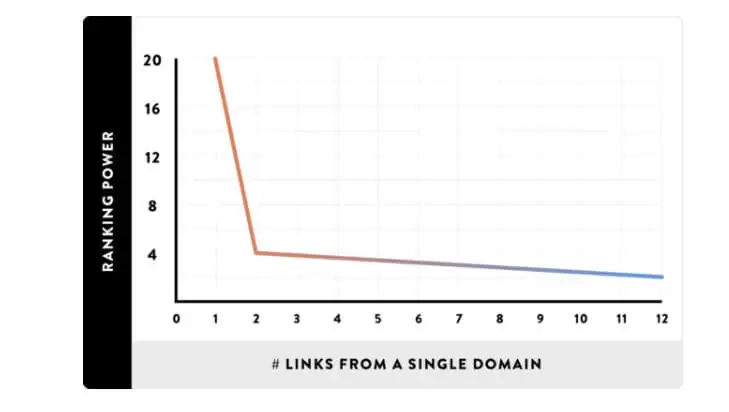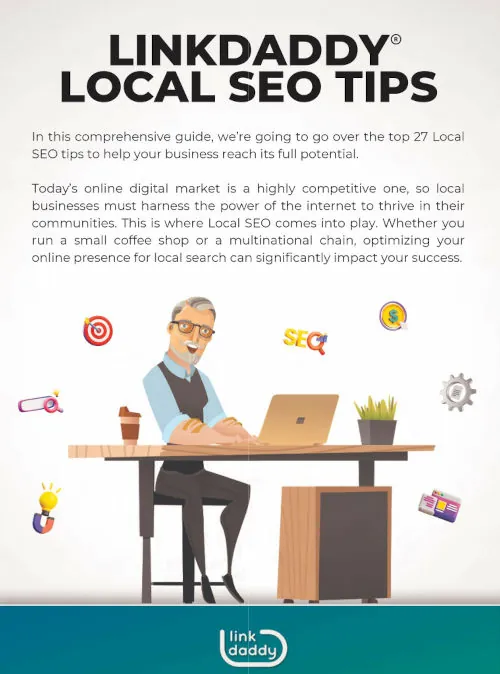Our first truth? Not everything you read about backlinks is true.
Google is constantly finding ways to deliver better answers to user search queries. That’s why it’s rolling out yet another algorithm update (Helpful Content Update). But even with all these updates, one ranking factor remains constant: backlinks.
It’s not a myth. This statement from Andrey Lipattsev, Senior Search Strategist at Google, confirms it. The importance of backlinks has the rumor mill running. You’ll hear many “expert opinions” on backlinks, how to build backlinks fast, and much more.
To set things straight, this article dissects the many myths and misconceptions about backlinks to find the truth hidden behind them. But that’s not all. We’ll also add our go-to technique for earning quality backlinks, so you can build better backlinks for your website.
Ready? Let’s get to it.
Backlinks: Debunking the Myths
With search engine algorithms still shrouded in mystery, the industry is rife with myths about backlinks. Here are common myths and misconceptions about backlinks and the truths behind them:
- High Domain Authority (DA) Means High-Quality Backlinks
No hard and fast rule says websites with high domain authority automatically generate high-quality backlinks. Of course, some of these websites are obvious link farms and abandoned websites. A site like this, for instance:

Are backlinks from these websites high quality? No.
In fact, domain authority is just a gauge of one site’s performance against another. But this is not to say that you should steer clear of backlinks from high DA websites. There’s a reason these sites perform better than sites with low DA.
What we’re saying is don’t rely on a single metric to draw backlinks to your site. However, if you do have to make a quick assessment, here are the barebones of every high-quality backlink:
The Anchor Text Is Contextual
There’s a correlation between keyword-specific anchor texts and rankings. Exact match anchors tend to rank higher than anchor texts without context.

Of course, you must remember that too much of everything is not-so-good. Going overboard with keyword-rich anchor texts can paint you as a black-hat link builder. Google’s Penguin update is designed to spot these black-hat strategies and devalue backlinks from them.
The Referring Site Is Topically Related to Your Site
Think about it. Suppose you publish an article on how to buy a bicycle. In that case, it’s only logical that the sites linking to that content should be sites about cycling and movement, as opposed to, say, sites about digital marketing and psychology.
Google is likely to put more weight on the backlinks from those relevant sites, making them high-quality backlinks.
The Referring Domain Is New to Your Backlink Profile
It’s great to have multiple backlinks from the same domain. It means you’re doing something well enough that your referrers keep returning. But it’s even better if you get backlinks from different referring domains.
Truthfully, backlinks from a single domain have diminishing returns. The more backlinks you get from a single site, the less weight search engines put on them.

You’re better off with 100 backlinks from 100 referring domains than with 100 backlinks from one domain. And it’s evident from the first page results on Google. The top-ranking pages have the highest number of referring domains.

Any backlink with these traits is a good backlink. But it’s easy to ignore these high-quality backlinks in search of “quality backlinks” from websites with high domain authority. You’ll be missing out on great backlink opportunities.
- Link Exchanges Hurt Your Website Rank
This is a dicey one. The thing is, Google frowns upon link exchanges to build your link profile. John Mueller says,
“A link exchange where both sides are kind of like you link to me and therefore I will link back to you, kind of thing, that is essentially against our webmaster guidelines. So that’s something where our algorithms would look at that and try to understand what is happening here and try to ignore those links. And if the web spam team were to look at it they would also say this is not okay. And if this is the majority of the links to your website like this then they might apply manual action. So that’s something I would avoid.”
However, there’s nothing wrong with reclaiming citations or reaching out to a relevant publication to link to quality content that’ll help their audience. If there were, several link-building strategies like broken link building and resource link building would have to be scrapped.
Our point? Link exchanges aren’t a great way to build your backlink profile. But you can ask for a backlink from an authority site if your content would be beneficial to its audience.
- High Link Acquisition Velocity Hurts Your Website Rank
The whole point of backlinks is to refer readers to quality content. This means if your content is informative and helpful enough, you’re likely to earn backlinks. The speed at which this happens shouldn’t be an issue considering the content is relevant to the referring domain.
Moreover, the more backlinks a webpage gets, the more visibility it gets. This also means there are even more people finding this webpage. It‘s right to assume that the more people see it, the more likely the webpage will gain more backlinks. That’s organic link-building right there.
Sometimes, we overestimate the ability of search engines. Search engines can crawl thousands of web pages in a short period, but it’ll be almost impossible for them to search the entire web to locate link acquisition velocity trends between sites.
This doesn’t mean you can buy low-quality links from spammy directories and link farms. Google has made great strides in finding low-quality backlinks that web owners gain from these sites.
- Guest Posting Devalues Backlinks
If you’ve been in the backlink building business for a while, even your first week, you’ll hear that guest posting is dead. It all started when Matt Cutt, former Google developer and Administrator of the U.S Digital Service, said,
“Okay, I’m calling it: if you’re using guest blogging as a way to gain links in 2014, you should probably stop. Why? Because over time it’s become a more and more spammy practice, and if you’re doing a lot of guest blogging then you’re hanging out with really bad company.”
That’s a pretty damning statement for guest posting. However, contrary to his statement, guest posting still works. The thing is, all SEO practices get spammy with time. Nobody says keyword targeting is dead because people stuff their websites with keywords for On-Page SEO.
Plus, there’s no rule against getting bylines from websites you contribute to. Think about it. High authority sites like Buzz Feed and New York Times regularly feature guest posts on their sites. Are they in the bad company too? Does this devalue the backlinks people get from guest posting on these sites? Certainly not.
It’s not surprising that 56 percent of bloggers write guest posts on multiple websites – it works.

What you shouldn’t do is write guest posts solely for link building. Remember that the reader is there for a solution to their pain point, so it’s best to write audience-focused content. Get it right, and you’ll leave the reader looking for more from you.
While there are many more misconceptions you’ll hear in the industry, these are most likely to pull you back the most. Now that you know the realities behind these myths and misconceptions, let’s get into the one truth behind backlinks.
The Untold Truth About Backlinks: It’s Still a Numbers Game
With all the buzz about the benefits of backlinks to site rank, you’d figure most sites would have that covered by now. Instead, 95 percent of all websites have zero backlinks. What’s more, 94 percent of all content has zero backlinks too.

Sadly, backlinking is a numbers game. All the top-ranking websites are sites that have built up massive backlink profiles. In fact, the #1 ranking website for any search term has close to 4 times more backlinks than the sites ranked #2 – #10.

Now, this brings up the question of backlink quantity vs quality. If the top-ranking sites typically have more backlinks, shouldn’t you just farm the links to build a massive profile as well?
Well, it doesn’t work that way.
Backlink Quality vs. Quantity
In the early years of link building, the quantity was everything. So the web admins would stuff their backlink profile with links through the white hat and black hat link-building strategies. This covered blog commenting, link exchanging, link farming, and other practices to increase the number of backlinks they had.
Today, doing that will most likely earn you a manual action instead, as it violates Google’s webmaster guidelines. As mentioned earlier, Google has evolved to identify these unnatural links. That’s where quality comes in.
You can go for quantity without sacrificing quality as well. Of course, it’s hard (not impossible) to build your website on the back of quality backlinks – these links are difficult to get. If it were easy to acquire backlinks, they wouldn’t be so high quality now, would they?
We recommend building a mixed profile of medium and high-quality backlinks. This way, you’ll have a profile strong enough to climb up the ranks. But this is where most people throw in the towel.
They feel it’s too much work without a guarantee of significant returns. Not exactly. There are several ways you can earn more high-quality backlinks to your site with a little more effort.
A Tried and Tested Way to Earn More Backlinks
One surefire way to earn more backlinks is through the Skyscraper Technique by Brian Dean of Backlinko. It’s our go-to technique, and with good reason – it’s relatively easy and the most efficient way to build content people want to link back to.
We can reduce this technique into three major steps:
- Finding trending topics in your niche.
- Finding gaps you can fill and how you can make the content even better.
- Promoting content like your life depends on it (well, your website rank does so ……).
Here’s how we’d go about that. First, we’ll pick out a competitor in our space and send them over to SEMrush for monitoring. Then, in SEMrush, we’ll use the “best by links” analysis tool to find the most linked pages on the competitor’s website.

Now, it’s time to make something like that, just better. So, we’ll start asking questions like:
- What did they miss?
- Did they add statistics to back their points?
- Would an infographic work well with this?
- They included ten tips. Can we make it 20?
Essentially, we’re finding all the ways to make this content better. Then, we reach out to:
- Referring domains to Backlinko’s post.
- Referring domains to similar posts in the top 10 of search results.
- Websites that shared similar posts.
- Websites that commented on similar posts.
Build a good case for your post, and you’ll get backlinks in no time.
Before You Leave
You won’t have an easy time earning medium and high-quality backlinks, as they’re harder to get. But they’re also the most effective at improving your SERP ranking through backlinks. As we said, backlinking is a numbers game, but the way to approach it is to build a profile that strikes a balance between backlink quantity and quality.
Hopefully, you’ve learned one stellar way to earn backlinks that convert. Did you find this article helpful? Think we missed something? We’d love to hear your thoughts in the comments below.









